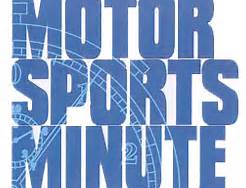Variety At Indy: Something To Strive For
- Updated: March 8, 2012
HAMMOND, IN: Later this month, IndyCar will roll out it’s first totally new car in a decade when the green flag drops in St. Pete. After months of testing and tweaking, many questions still remain concerning the type of show we might expect this year, but one thing seems certain: a serious attempt is being made to make IndyCar less of a “spec” series. And that’s a good thing.
Unfortunately, although we do have three different engine manufacturers involved, the actual 2012 Dallara chassis’s will all appear identical; at least for this year. In 2013, IndyCar promises to offer some visual variety by allowing different “body kits”, which should force the cars to at least look somewhat different. It seems obvious that this “variety” is what we would all like to see happen.
It wasn’t all that long ago that variety was not a problem; at least, not at the Indy 500.
A mear eighteen years ago; 1994; something very different appeared at the Indianapolis Motor Speedway; something totally unexpected; something totally legal; something controversial; something interesting.
Talk about a secret weapon! Seventy years previously, in 1924, Duesenberg had unleashed the first supercharger on an unsuspecting Indianapolis 500 field. In 1994, history repeated itself, as it so often does.
Roger Penske, who knows how to read a rulebook as well as anyone, found a major loophole regarding engine specs. The rule was intended to encourage the use of less expensive, production-based pushrod engines by giving them a cubic inch advantage. In collaboration with Mercedes-Benz, an all new, 209 cu. In. pushrod racing engine was build in complete secret. Unfortunately for the rest of the competition, the idea that these pushrod engines were supposed to be “production-based” was never clearly stated. Apparently, only Team Penske noticed this omission.
During practice, the Penske trio of Al Unser Jr., Emerson Fittipaldi and Paul Tracy were registering incredible speed on the radar guns along the front straightaway. Slowly but surely, the rest of the field were realizing that they had been duped. On the Friday before Pole Day, Tracy threw away his chances to start up front by losing control of his monster and crashing in Turn 3. However, as expected, Al Jr. took the Pole, with Fittipaldi only slightly slower. Now, the only remaining question was: could the new, virtually untested engine last 500 miles?
On Race Day, Team Penske turned the creature loose; besides Unser Jr. and Fittipaldi, only rookie Jacques Villeneuve was able to lead. As the laps wound down, Emerson Fittipaldi was poised to score his third 500 victory, holding nearly a one lap lead on teammate Unser Jr. Then, for no apparent reason, on the 184th lap, Fittipaldi brushed the wall in Turn 4, handing the win to teammate Al Unser Jr.
Shortly after the 1984 Race, the rulebook was amended to exclude purpose-built pushrod engines. Thus, the all-conquering Mercedes-Benz pushrod V-8 became an instant museum piece. The engine only raced once but once was enough.
As the countdown to the 2012 Indy 500 continues, it might be beneficial to look back into Speedway history, as we continue to remember a time when variety really was the spice of life at Indy. Next time, we’ll go back another 10 years to 1984. The further back we go, the more variety we will see. So, just when WERE the “good old days”?
You decide.




![Porsche Fabcar crosses the finish line. [Robert Madara photo]](https://racingnation.com/wp-content/uploads/2023/11/FabcarFinish-108x70.jpeg)

![USF2000 Pro driver Lindsay Brewer. [Eddie LePine Photo]](https://racingnation.com/wp-content/uploads/2023/06/IMG_8825_2-108x70.jpg)